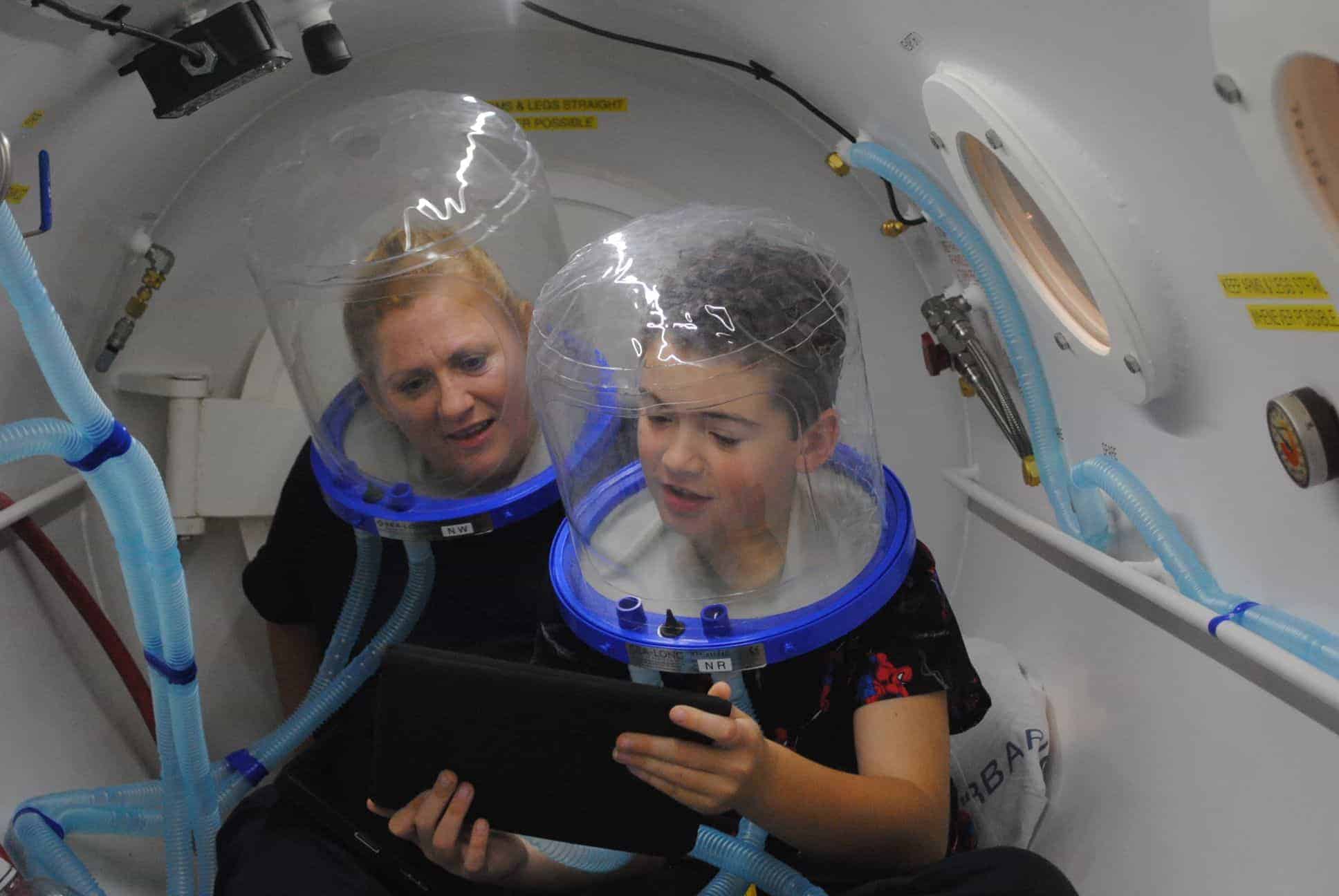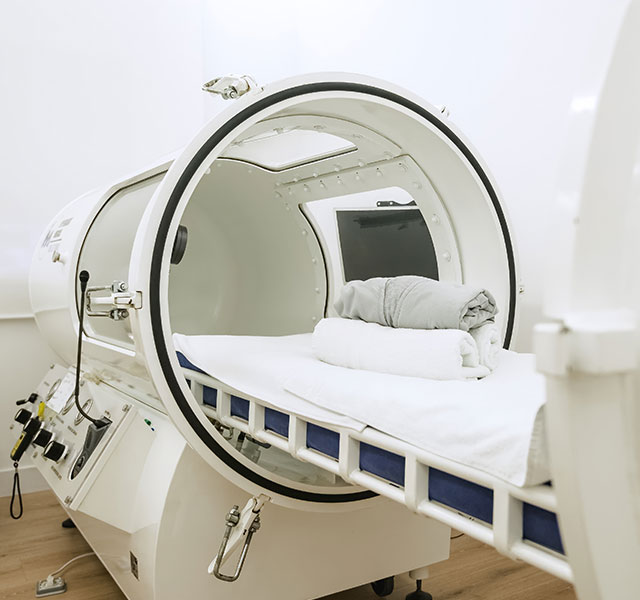Open the Power of Hyperbaric Oxygen Therapy for Faster Recovery
Hyperbaric Oxygen Treatment (HBOT) has actually emerged as a critical strategy in the realm of healing, using an one-of-a-kind system to improve recovery with raised oxygen levels. As various medical conditions profit from HBOT, recognizing its particular applications and the scientific research behind its performance is crucial.
What Is Hyperbaric Oxygen Therapy?
Hyperbaric Oxygen Treatment (HBOT) is a medical treatment that involves making use of a pressurized chamber to supply pure oxygen to clients. This therapy operates the concept that increasing ambient stress allows the lungs to take in even more oxygen than under normal weather. hyperbaric oxygen therapy. Because of this, the heightened oxygen levels in the blood stream can substantially enhance the body's natural recovery procedures
HBOT is provided in specialized chambers, which can accommodate one or more individuals and are usually readied to pressures varying from 1.5 to 3 times that of typical air. Throughout a session, people take a breath 100% oxygen while the pressure is boosted, resulting in the dissolution of oxygen in bodily fluids, including plasma, lymph, and cerebrospinal liquid. This process not just improves oxygen distribution to broken tissues however also promotes numerous biochemical responses necessary for recuperation.
While HBOT is commonly identified for dealing with problems such as decompression illness and carbon monoxide poisoning, it has actually likewise gained interest for its prospective applications in various other clinical fields. The therapy is typically well-tolerated, although it is necessary for people to be reviewed for any kind of contraindications before treatment.
How HBOT Improves Healing
The boosted oxygen degrees accomplished during Hyperbaric Oxygen Treatment (HBOT) play a significant function in enhancing the body's healing procedures. By providing pure oxygen at elevated pressures, HBOT assists in the diffusion of oxygen right into tissues, advertising cellular metabolism and energy manufacturing. This increased oxygen accessibility supports the synthesis of adenosine triphosphate (ATP), the energy currency of cells, which is essential for repair service and regrowth.
Additionally, HBOT promotes angiogenesis, the development of new blood vessels, which is important for supplying nutrients and oxygen to hurt tissues. This process not just increases recovery however also decreases the risk of persistent injuries and infections. Boosted oxygenation additionally aids in the removal of toxic substances and inflammatory moderators, adding to an extra efficient recovery setting.

Advantages of Hyperbaric Oxygen Therapy
Patients undertaking Hyperbaric Oxygen Therapy (HBOT) typically experience an array of benefits that prolong past improved healing times. Among the primary benefits of HBOT is its ability to improve oxygen shipment to cells. By raising oxygen concentration in the blood, HBOT promotes mobile metabolic process and motivates the fixing of broken tissues.
In Addition, HBOT has been revealed to minimize inflammation, which can minimize pain and improve general healing. This anti-inflammatory result can be particularly helpful for clients recovering from surgical treatment, injuries, More Bonuses or persistent conditions. The treatment stimulates the development of new blood vessels, a process understood as angiogenesis, which is critical for delivering nutrients to recovery tissues.
An additional substantial advantage is the capacity for enhanced immune function. By enhancing the body's oxygen levels, HBOT can reinforce immune feedbacks, aiding patients ward off infections during healing. Furthermore, numerous people report enhanced energy levels and minimized fatigue adhering to therapy, adding to a total feeling of health.
Conditions Treated With HBOT
Countless medical conditions can take advantage of Hyperbaric Oxygen Treatment (HBOT), making it a versatile therapy choice in numerous health care setups. HBOT is largely acknowledged for its effectiveness in dealing with decompression illness, a condition typically experienced by divers. Furthermore, it plays a critical role in advertising the recovery of persistent wounds, particularly diabetic person foot ulcers, by boosting oxygen distribution to compromised tissues.
Other problems that may be treated with HBOT consist of radiation injuries, where it aids in cells recovery after radiation therapy. It is also beneficial for carbon monoxide poisoning, as it aids displace carbon monoxide from hemoglobin, recovering typical oxygen degrees in the blood. HBOT is utilized in cases of thermal burns, enhancing the healing procedure and reducing the threat of infection.
Individuals dealing with osteomyelitis, an infection of try this site the bone, might likewise experience improved results with HBOT, as it assists to increase oxygen supply to contaminated tissues. Specific neurological conditions, such as distressing brain injury and stroke, are being checked out for HBOT's prospective neuroprotective effects - hyperbaric oxygen therapy. In general, the diverse applications of HBOT emphasize its relevance in modern-day medicine
What to Anticipate Throughout Treatment
Complying with the exploration of different conditions treated with Hyperbaric Oxygen Therapy (HBOT), recognizing what to anticipate throughout therapy is important for patients considering this treatment. The therapy commonly occurs in a specialized chamber, which can suit one or numerous clients. During the session, the chamber is gradually pressurized, enabling the patient to inhale pure oxygen at degrees greater than atmospheric stress.
Clients can anticipate to undertake several sessions, each lasting about 60 to 90 minutes. There may be an experience of fullness in the ears, similar to what one experiences during altitude adjustments, but this typically resolves quickly with simple equalization techniques.
The therapeutic environment is monitored by skilled specialists that ensure safety and comfort. Clients are motivated to kick back, as they might read or listen to music throughout the procedure. While many individuals tolerate HBOT well, some might experience light adverse effects such as tiredness or short-term visual adjustments.
Ultimately, comprehending these elements can assist relieve any type of stress Homepage and anxieties and prepare clients for a valuable recuperation experience with HBOT.
Final Thought
